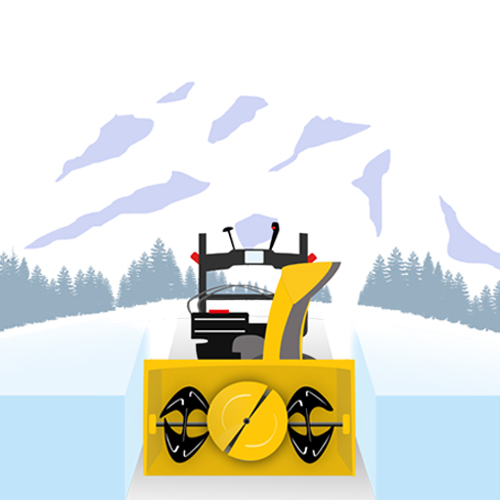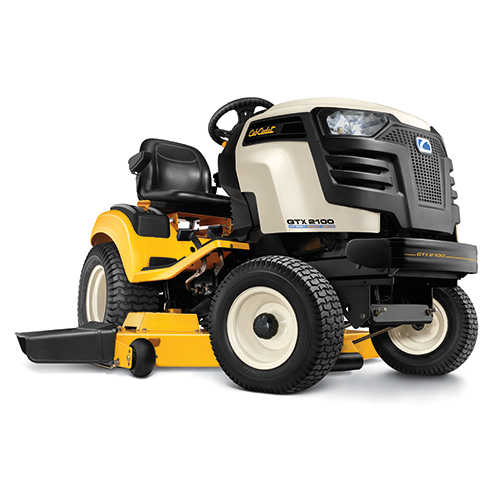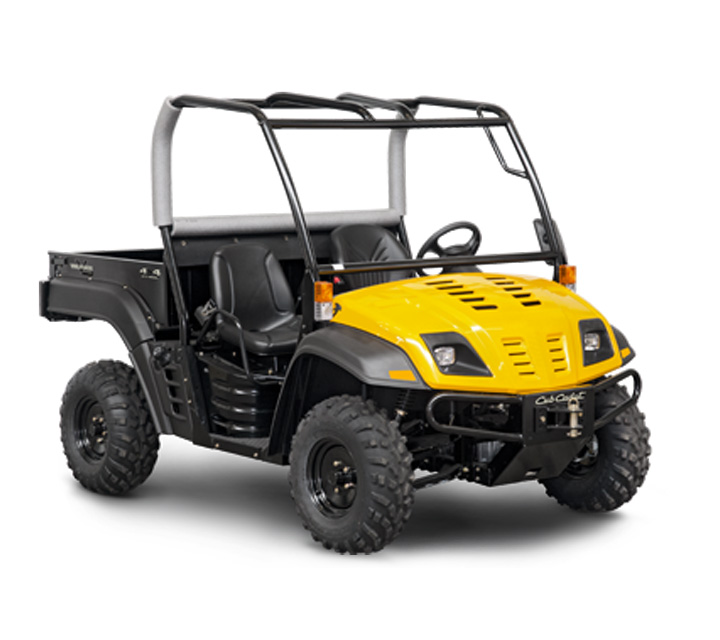How much horsepower should a snow blower have?
When clearing large quantities of snow, top performance is imperative. For a snow blower to be able to handle this task, it needs sufficient power. But how much horsepower should a snow blower have in order to function optimally?
A snow blower performs at its best in winter. With such a device, masses of snow can be cleared within a short time. The work is not only done much faster than with a snow shovel but also less physically demanding. However, when the snow is especially wet, adequate power is needed to reliably move the weight. Therefore, when purchasing a snow blower, the question arises as to how much horsepower it should have in order to meet the requirements.

Performance specifications for snow blowers
Most snow blowers are equipped with a gasoline combustion engine. The power is indicated here in HP or also kW. The conversion is quite simple with the following rule of thumb: 1 kW ≈ 4/3 hp, i.e. 1.3 hp is one kW and 1 hp is 0.73549875 kW. Some examples:
HP/kW
- 1/0,74
- 2/1,47
- 3/2,21
On the other hand, the power of electric snow blowers is given by means of a wattage specification. Typically, inexpensive, entry-level models have about 1,000 watts; more powerful ones about 2,000 watts. Nevertheless, these are only suitable for occasional use on smaller areas and with small amounts of snow. If the devices are cable based, the range and flexibility are especially limited with these types of models.
Snow blowers for occasional use
If you only use the snow blower to occasionally clear smaller amounts of snow from paths and driveways, a device with a comparatively low output may be sufficient. Most models are single- or two-stage and start at around 5 horsepower. These snow blowers represent a good middle ground between initial cost and a noticeable reduction in workload.
- With single-stage models, the auger merely pushes the snow to a discharge chute. The wheels are driven by the auger.
- Two-stage models also have a blower that displaces the snow through a discharge chute. The wheels are driven by the motor.
Also suitable for this area of application are electric snow blowers, which generally do not provide quite as much power as a gasoline snow blower. Single-stage entry-level models with mains operation can start at 1,000 watts and are generally suitable for small amounts of snow. Better suited for heavy winters are models with approx. 2kW and / or two-stage models.
Snow blowers for large amounts of snow
For clearing snow on slopes, large areas or in case of vast amounts of snow, you will need an extra bit of power. Cub Cadet's three-stage snow blowers, which are rated at 7.8 kW , offer professional-grade snow blowers with low maintenance and zero emissions.
- Three-stage models are comparatively new on the market. These models first discharge snow into the housing, where it is then transported to the rear and ejected in a third step.
Last but not least, the materials used are decisive for the performance of a snow blower. For example, the clearing auger and the ejection chute should be made of steel for maximum robustness so that they can work their way through heavy snow.


Other performance characteristics for snow blowers
Engine power measured in horsepower represents only one aspect of a snow thrower's performance. Four-stroke engines are somewhat more powerful than two-stroke engines.
No less important for optimum work results are, for example, a sufficient ejection range and an ejection shaft that transports the snow.
In addition to snow blowers with wheel drive, which can also be equipped with snow chains to help further improve traction, there are also snow blowers with a caterpillar drive. These models can operate on frozen ground and are therefore particularly suitable for icy surfaces.
Alternative to the snow blower
Purchasing a snow blower isn’t always a must. After all, not only are there additional costs, but you also need a place to store the machine during the summer months. If you already own a lawn tractor, many models offer the option of attaching a snow blade. Although it doesn’t have an ejection chute, it is quite capable of clearing small amounts of snow from paths with ease via the drive of the lawn tractor. Snow chains for optimum traction and a powerful engine are also helpful for a lawn tractor.
Conclusion
For occasional use, snow blowers, with around 5 horsepower and one or two speeds, are generally adequate. However, if you intend to clear large amounts of snow, want to work on slopes or if the snow is quite wet, a three-stage device with 10 hp or more is recommended. Other criteria also play a role that affect the performance level and should also be taken into account when deciding which machine to buy.
Gesamtsieger Fachhandelspartner 2018
Bei dem im 2-Jahres-Rhythmus stattfindenden mi Leistungsspiegel bewerten die Fachhändler der Gartengerätebranche alle teilnehmenden Lieferanten in verschiedenen Kategorien. Bewertet werden unter anderem das Liefer- und Reklamationsverhalten, der Service oder die Betreuung durch den Innen- und Außendienst.
Mit Bestnoten in allen Kategorien konnte Cub Cadet in diesem Jahr überzeugen und verdient den 1. Platz im Gesamtergebnis erringen.


Und schon wieder!
Im Jahr 2013 hat ein weiteres innovatives Produkt aus unserem Hause den Plus X Award „Produkt des Jahres“ erhalten: Unsere revolutionären 3-stufigen Schneefräsen. Mit dieser Auszeichnung stellen wir erneut unsere Forschungs- und Entwicklungskompetenz unter Beweis.



